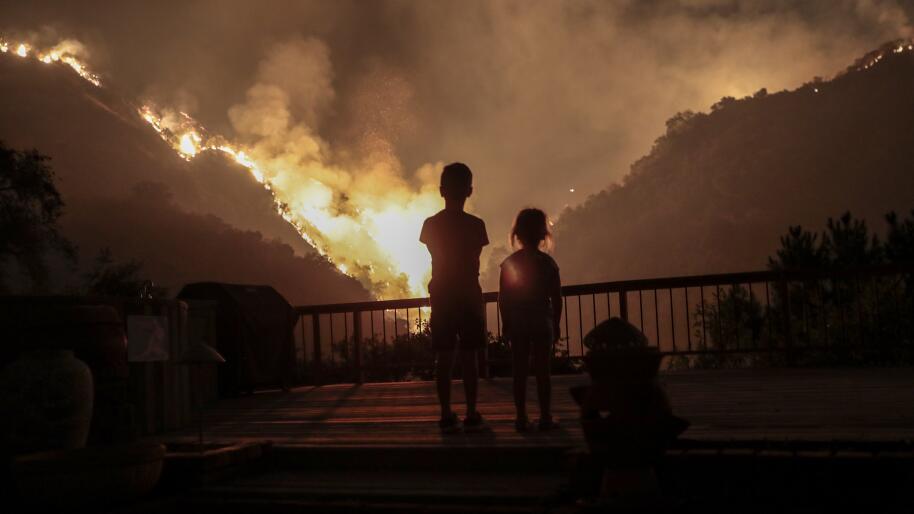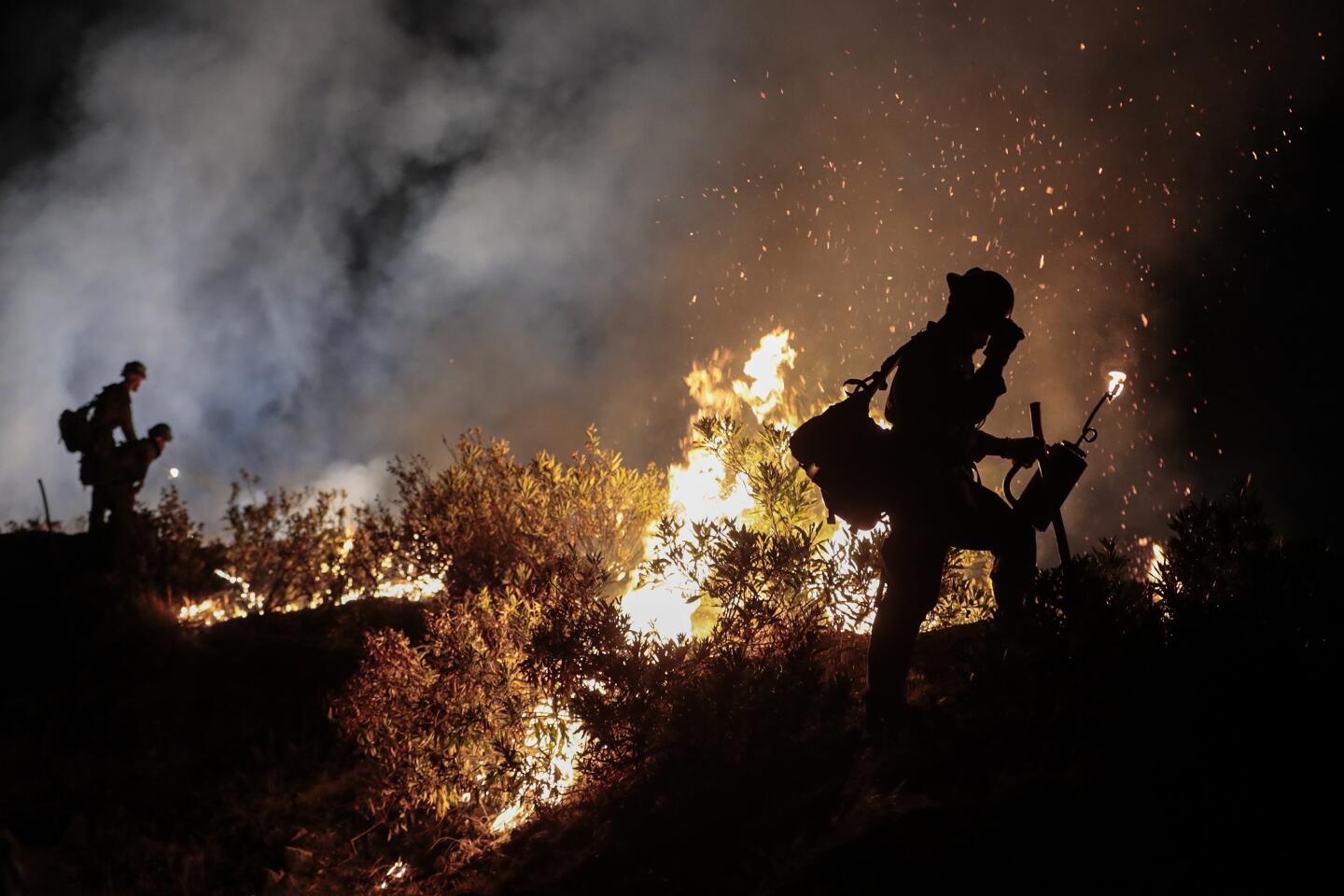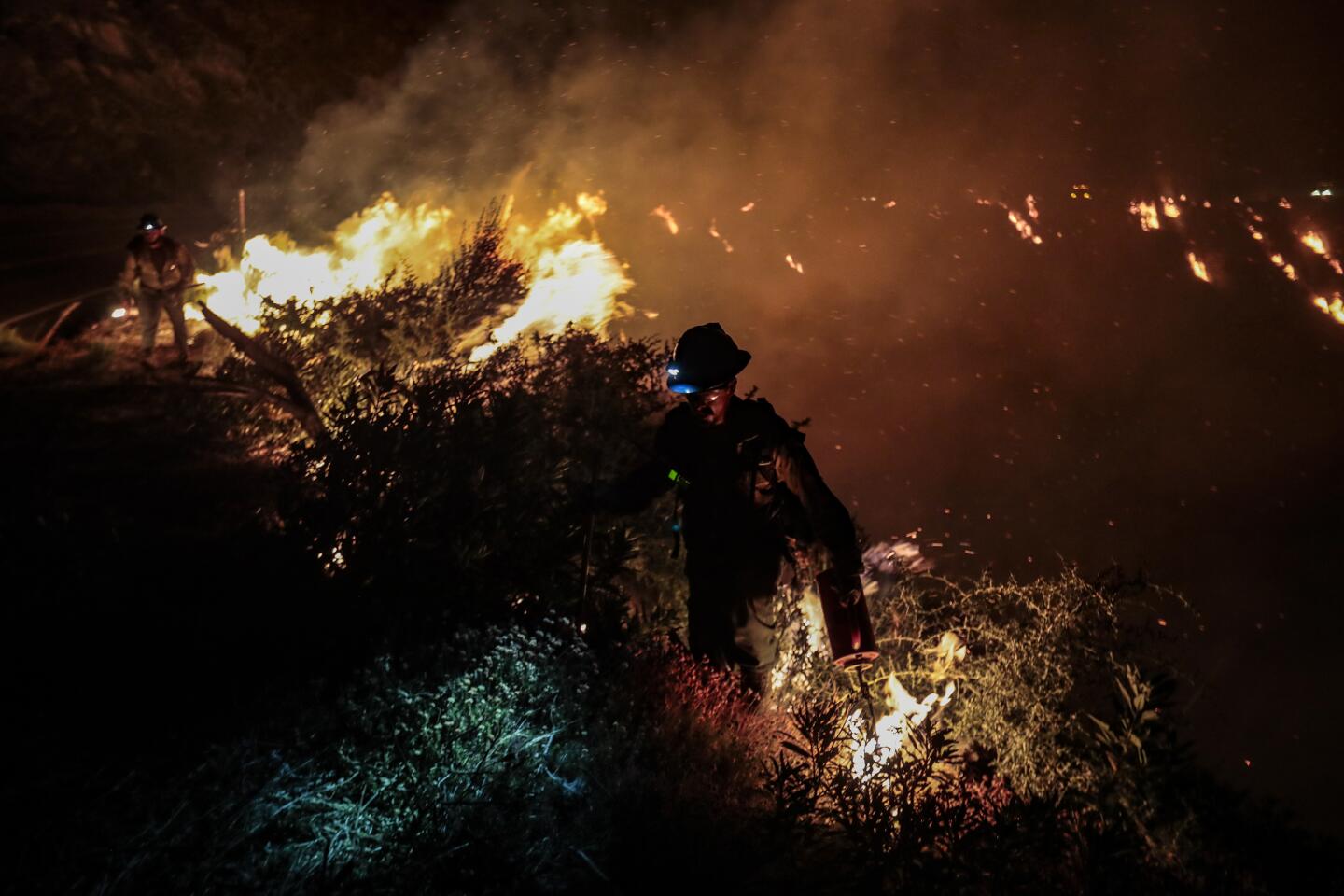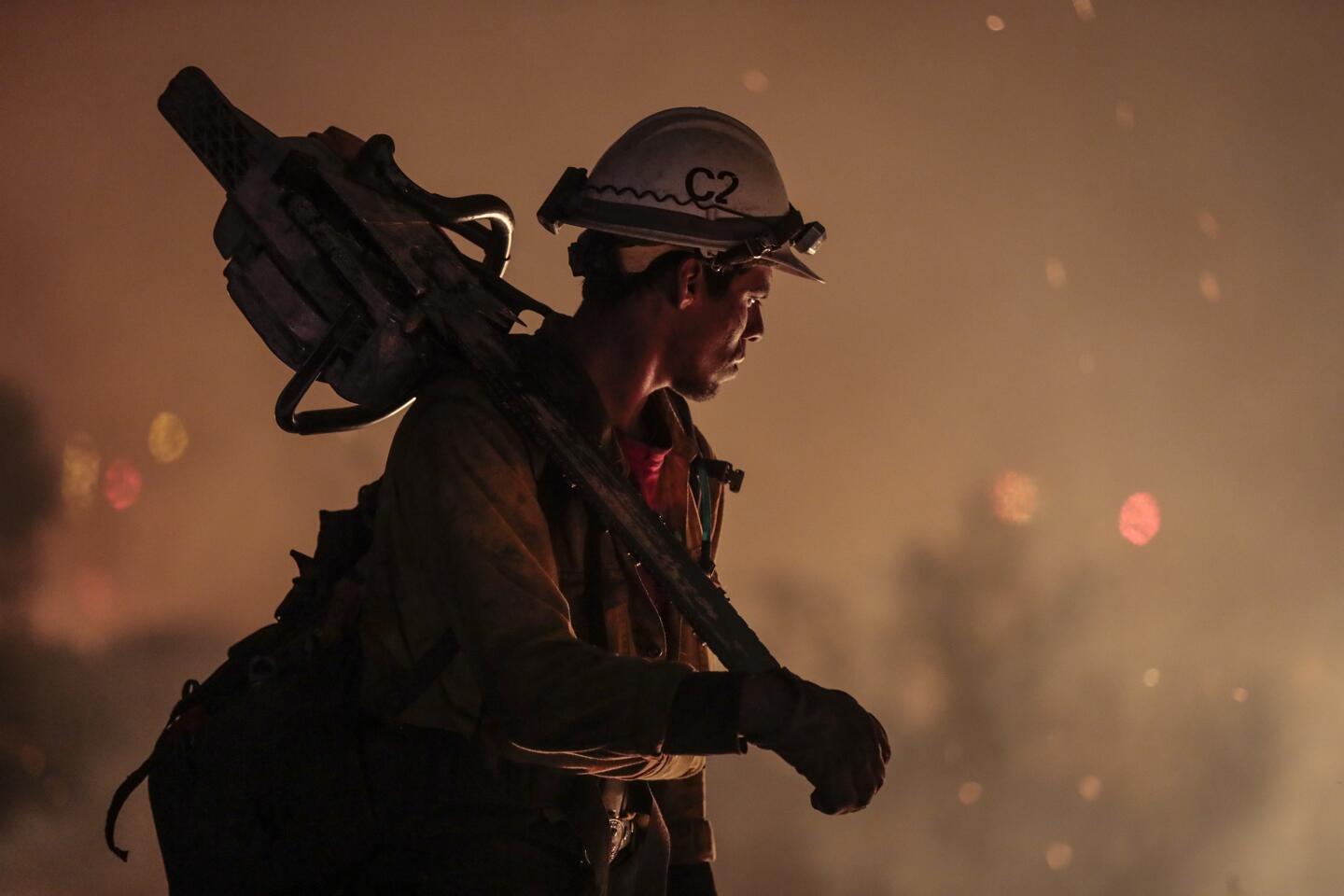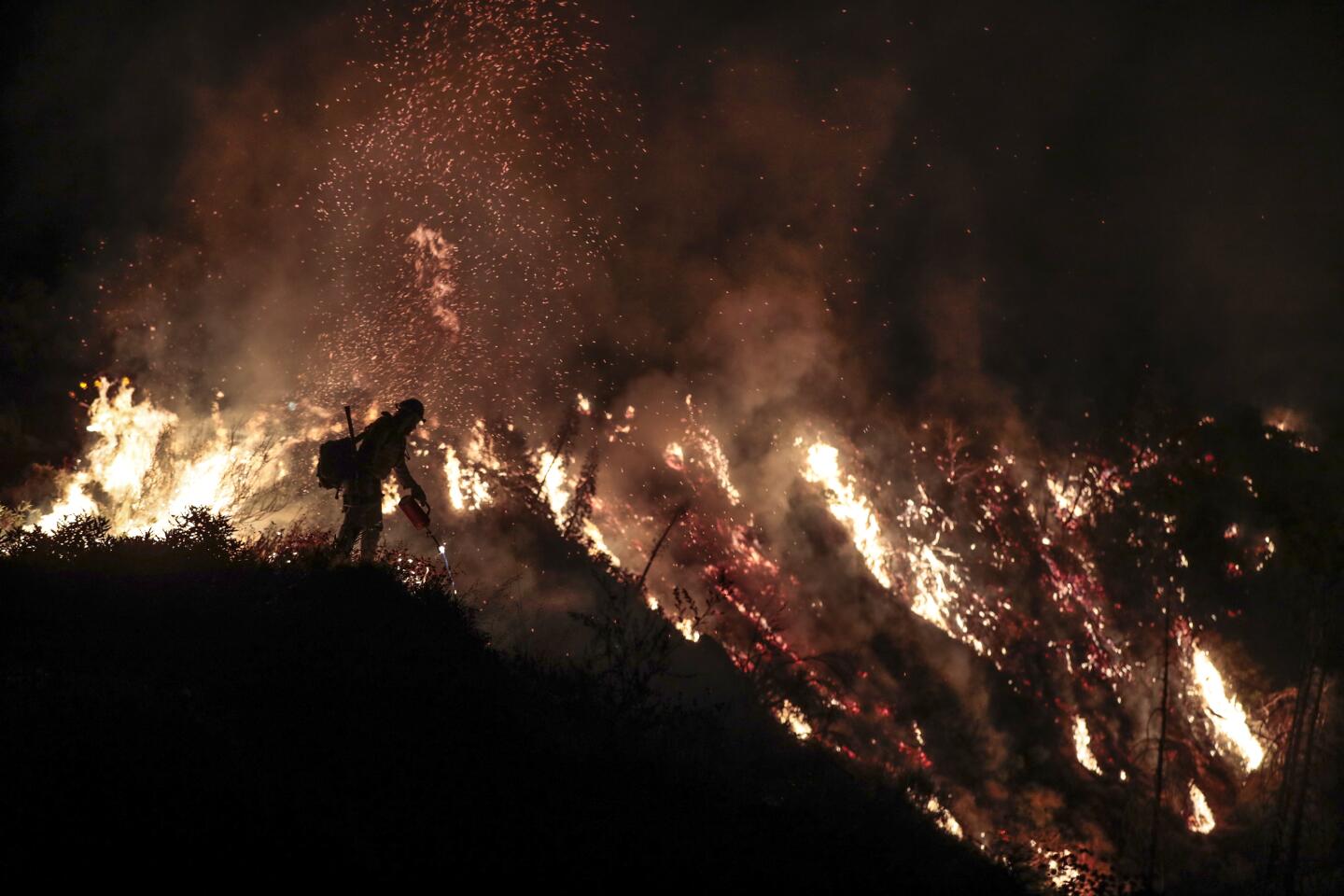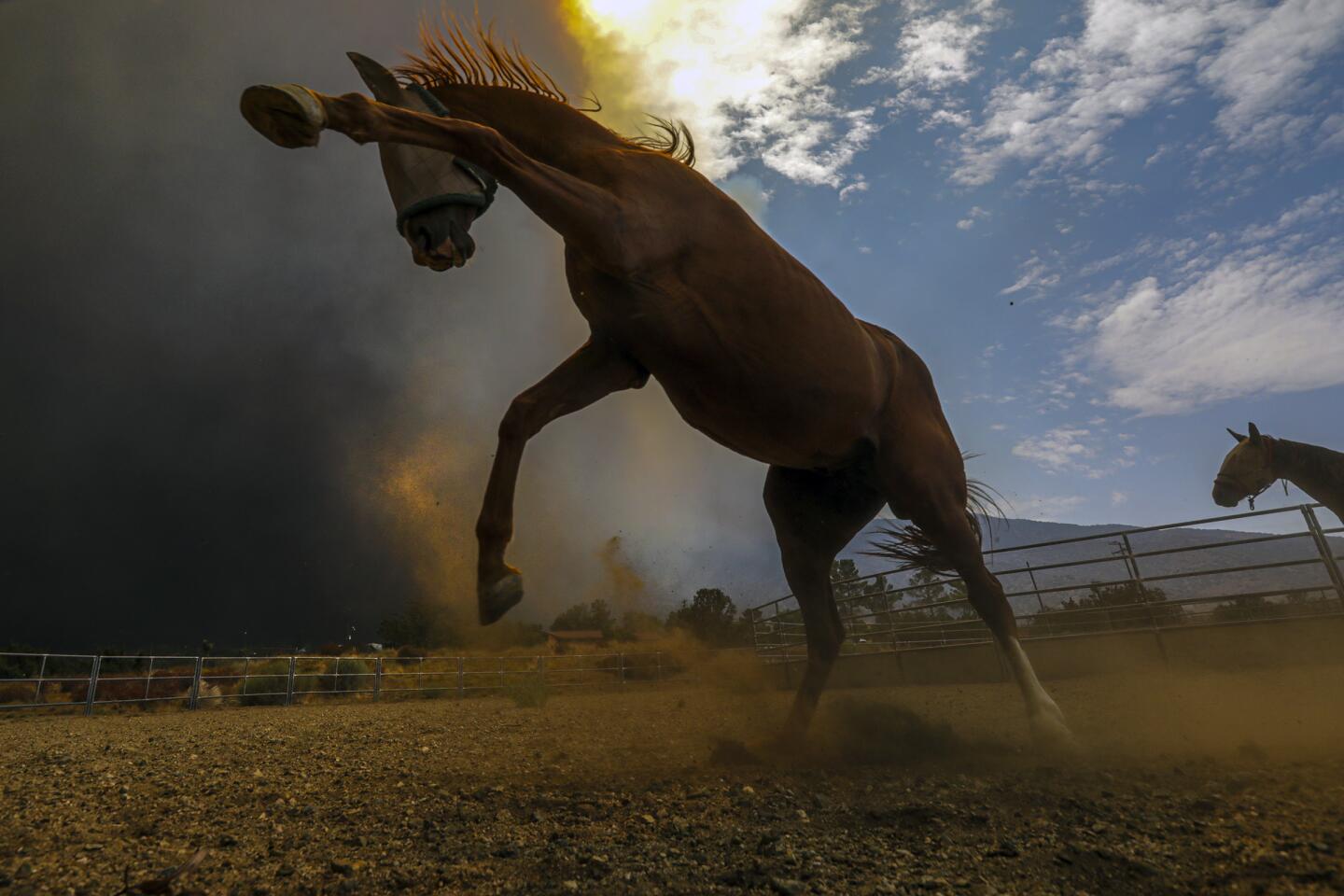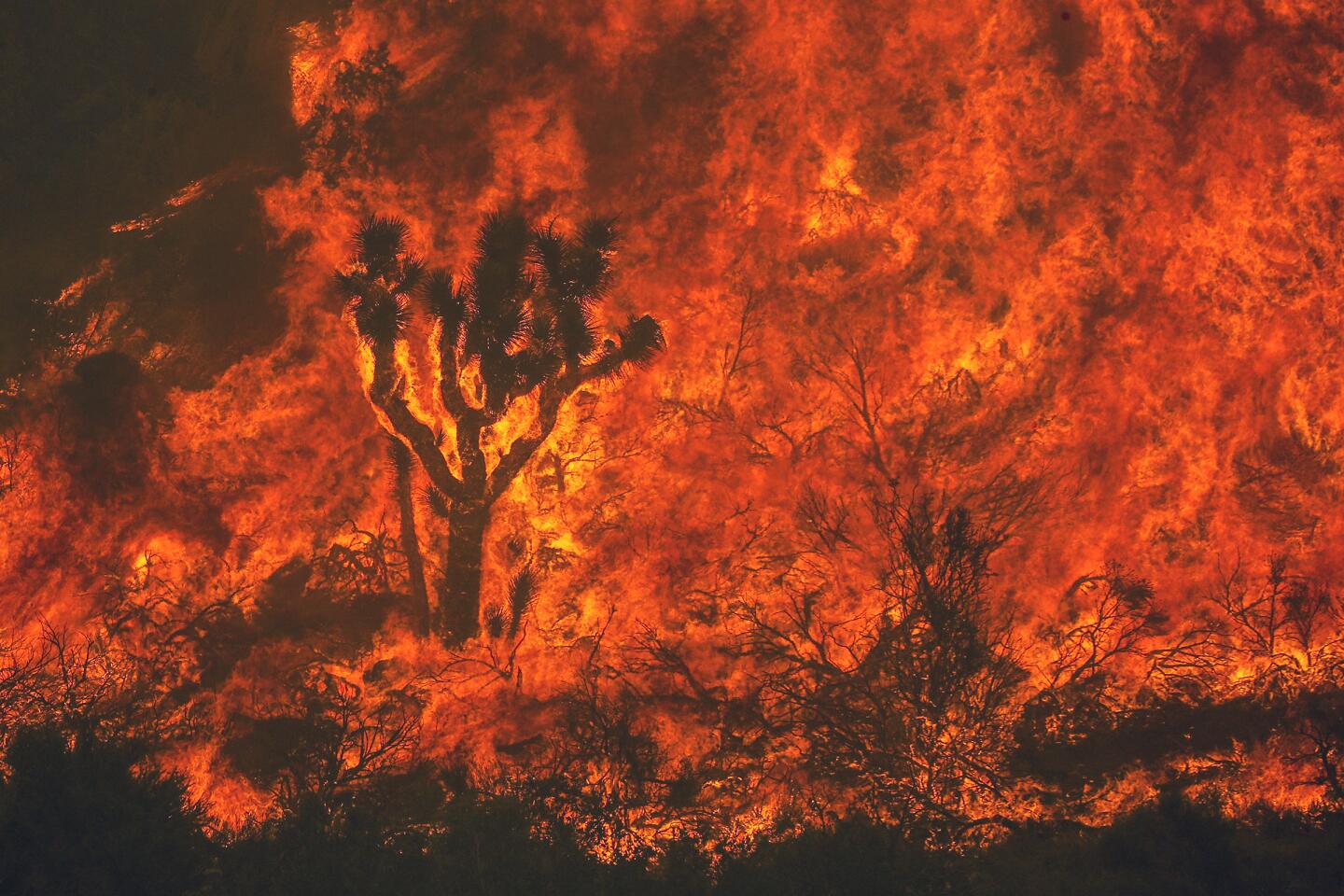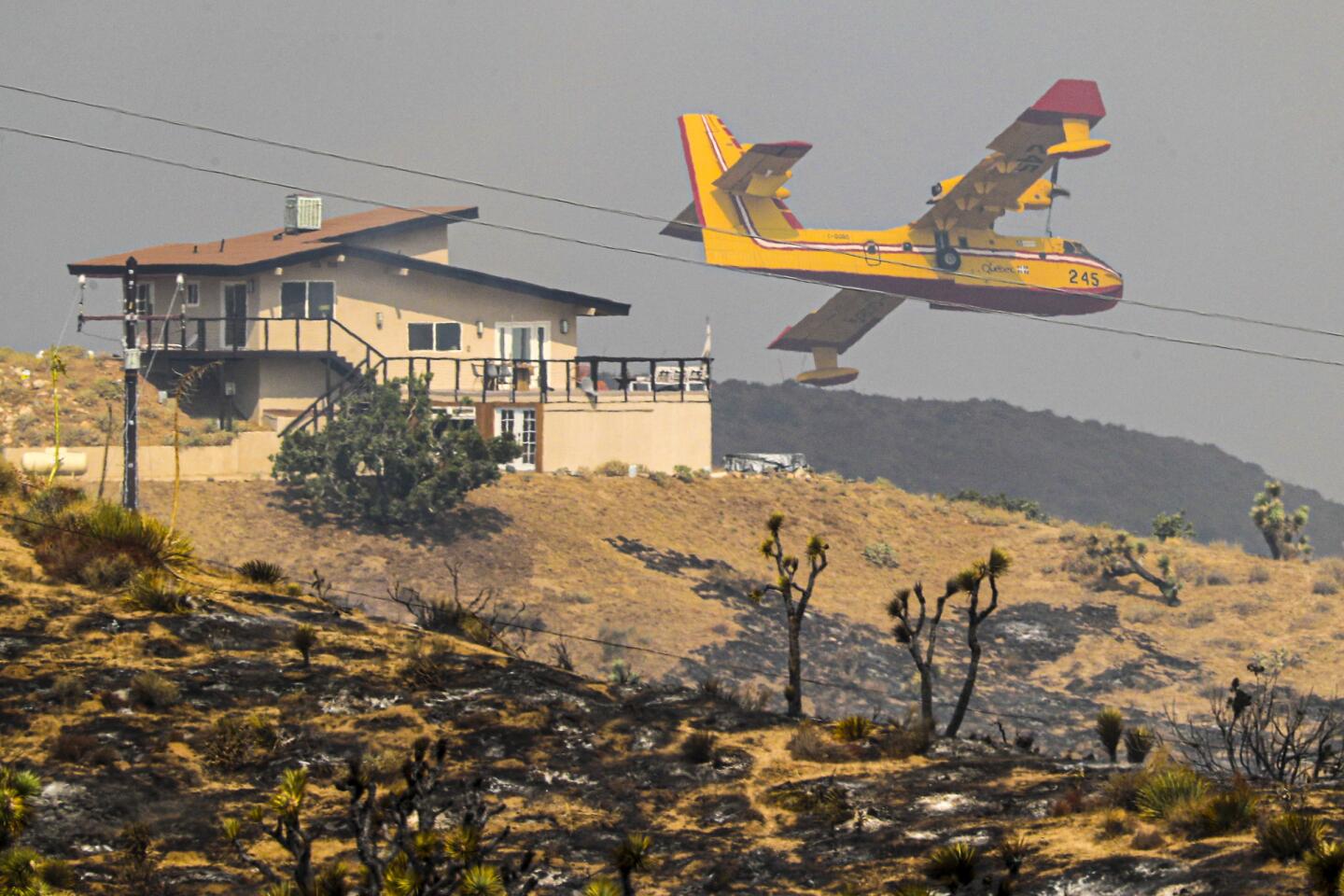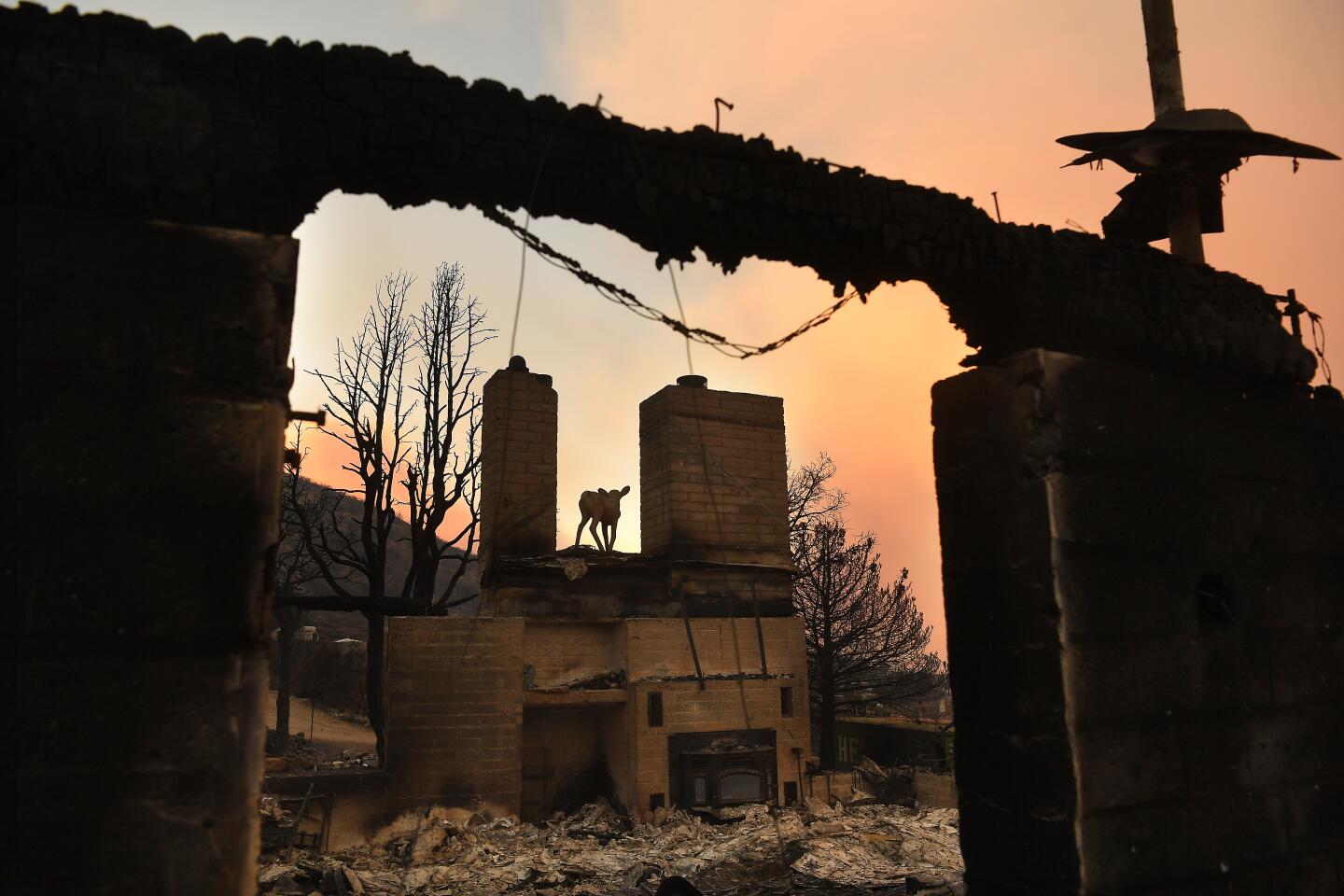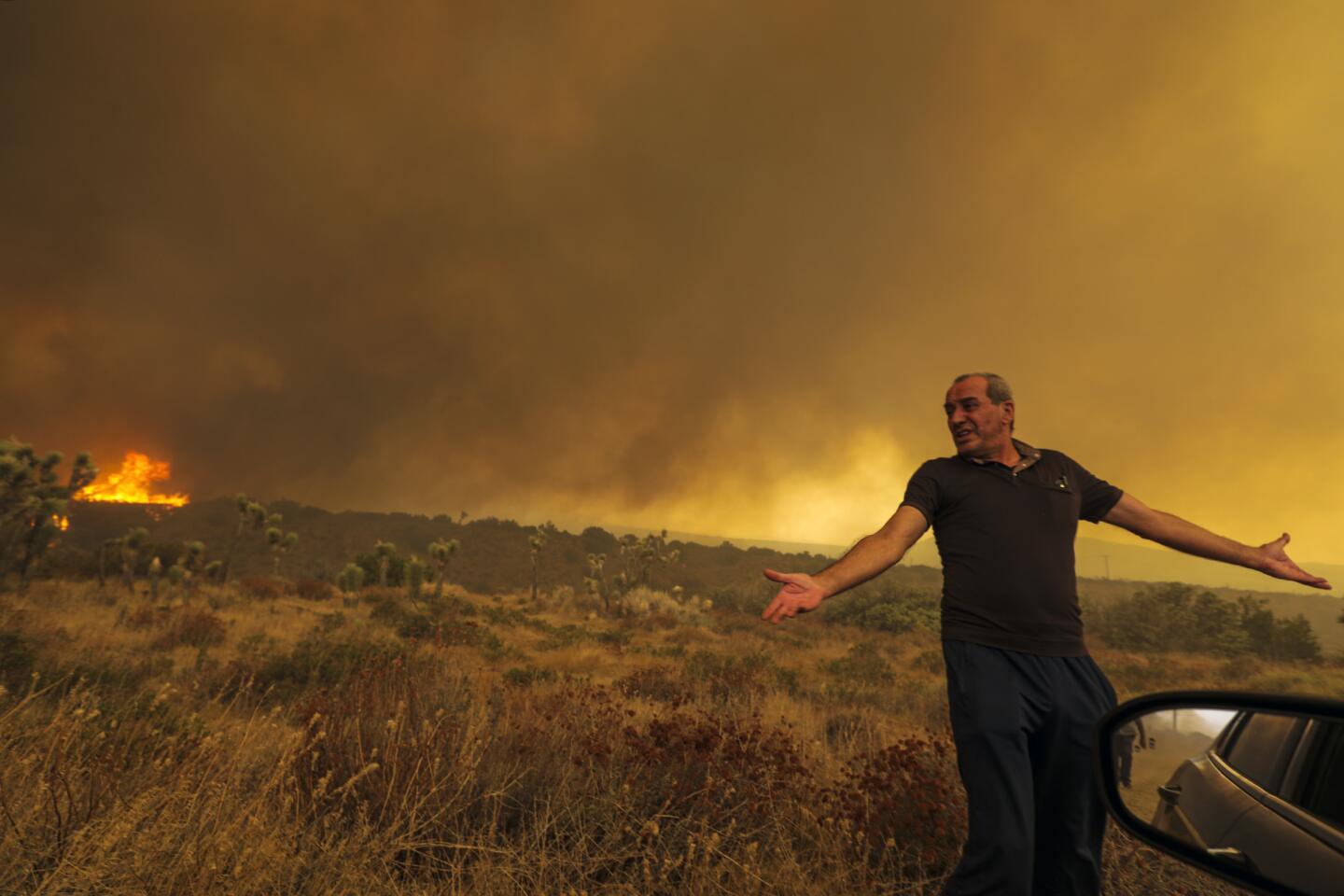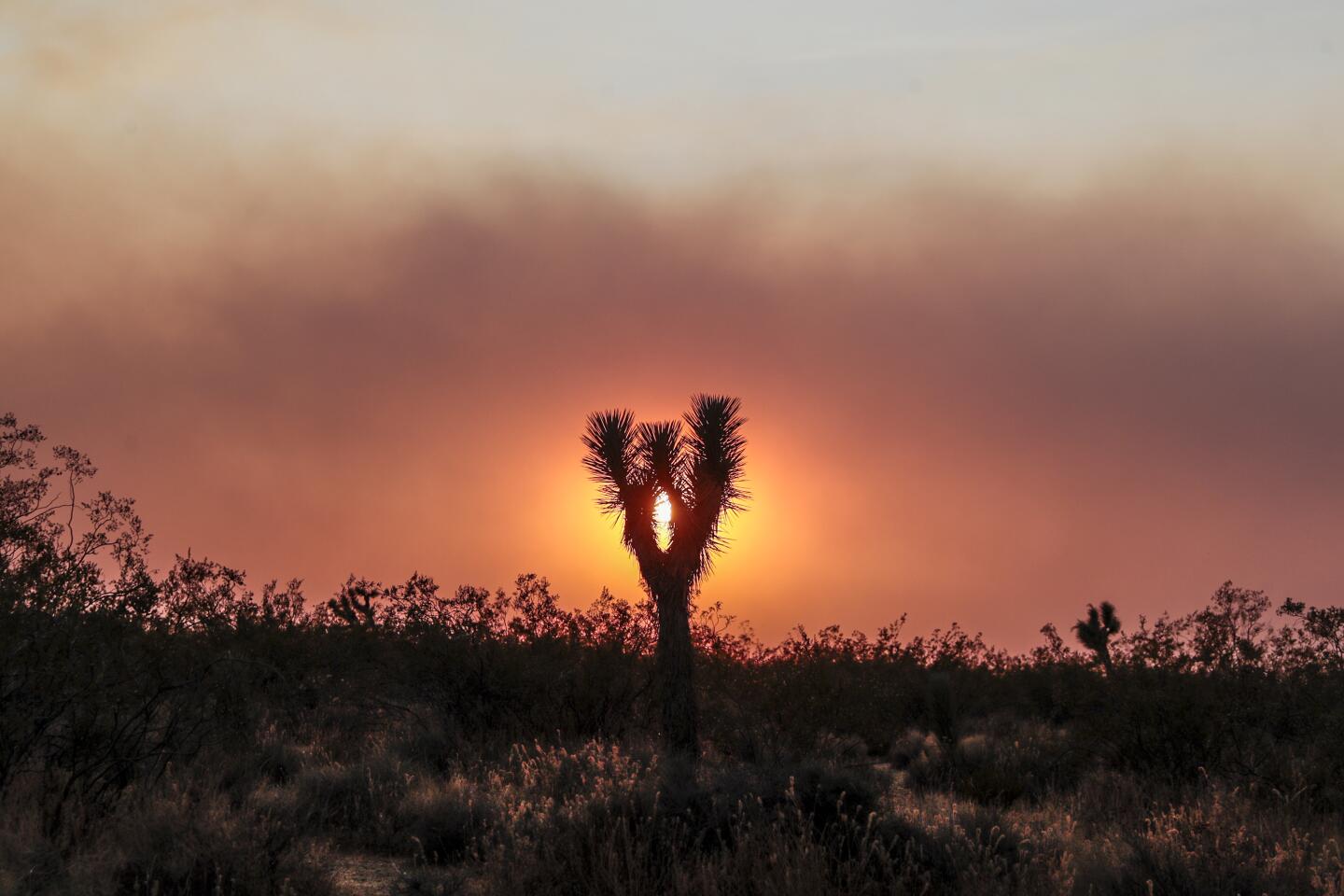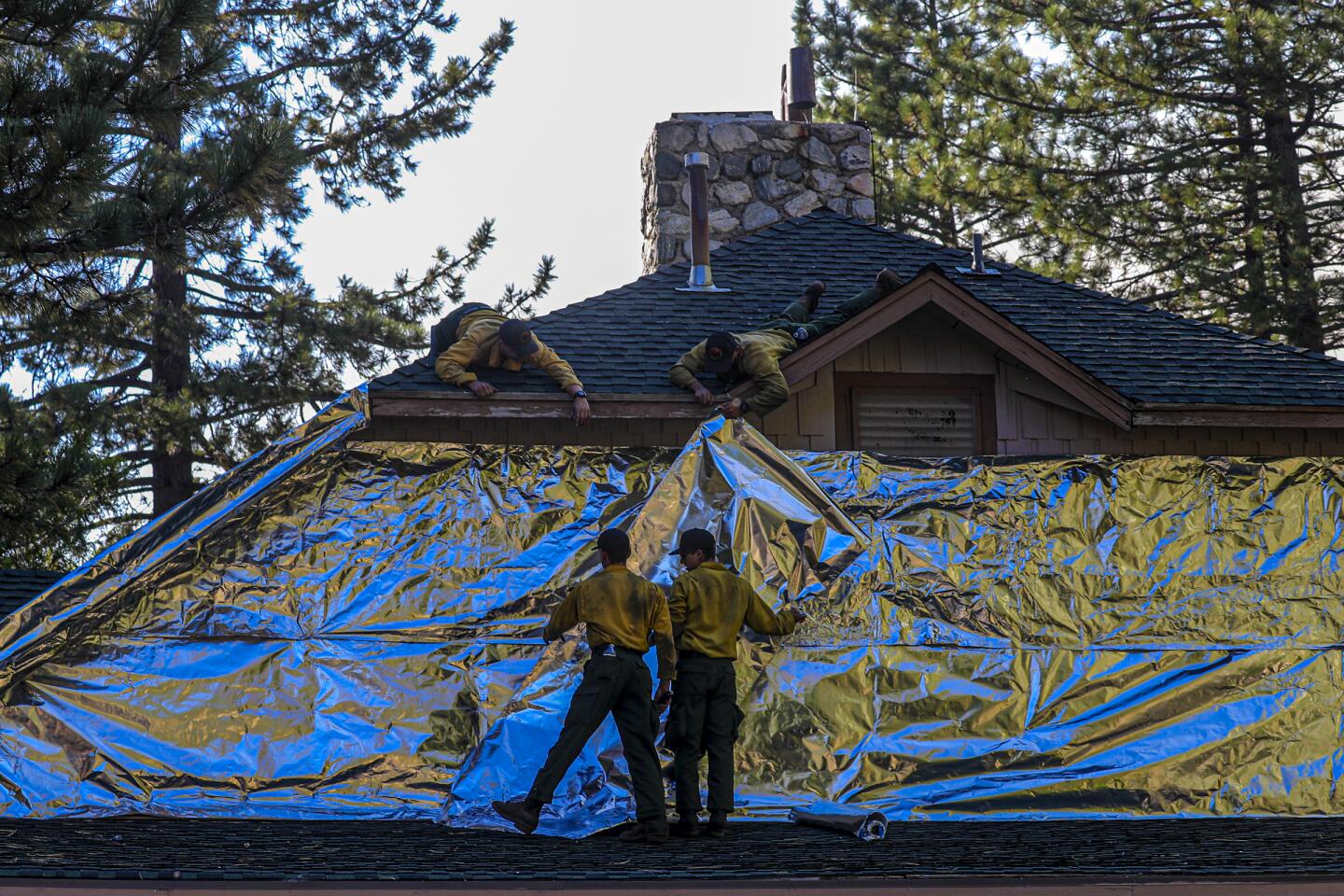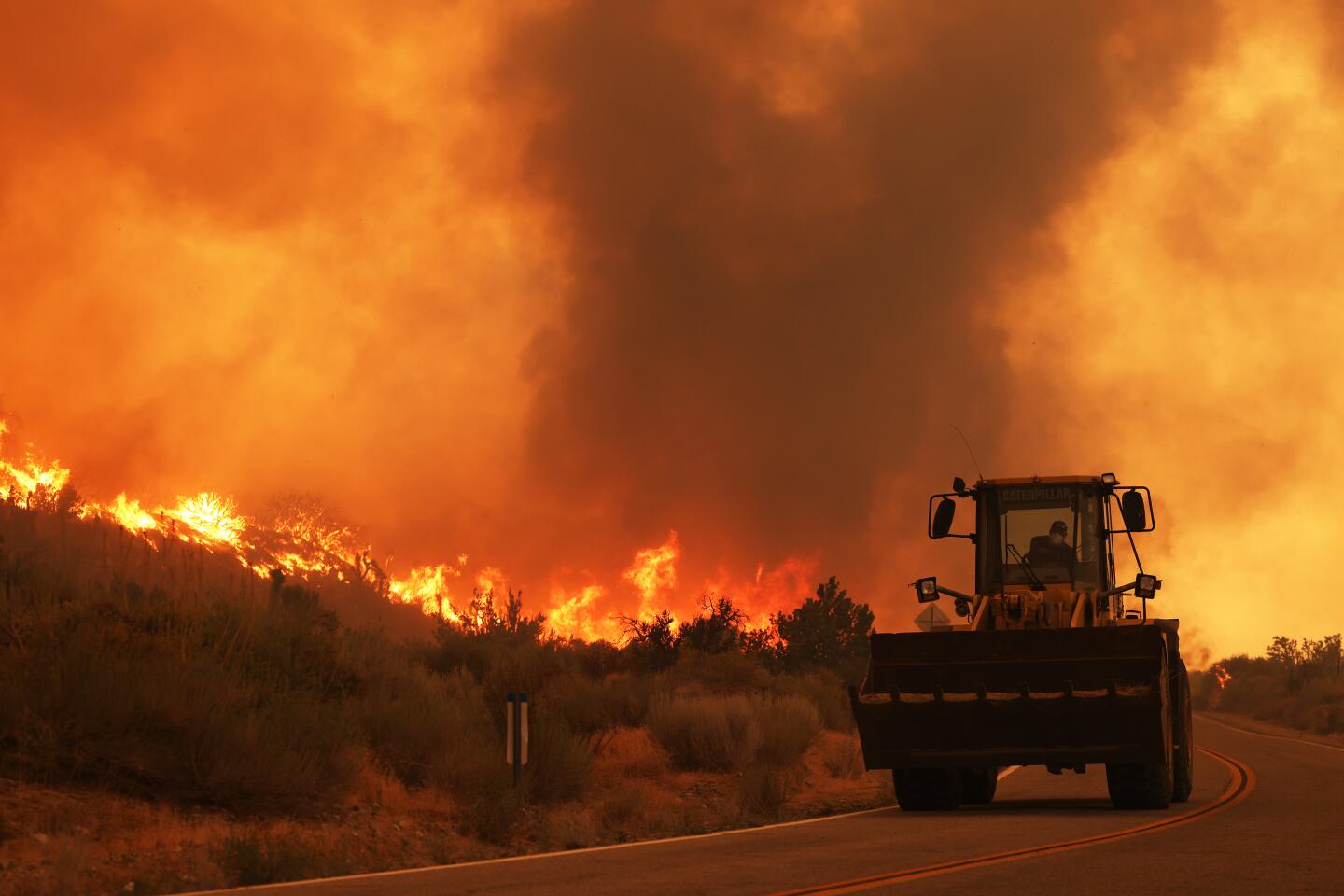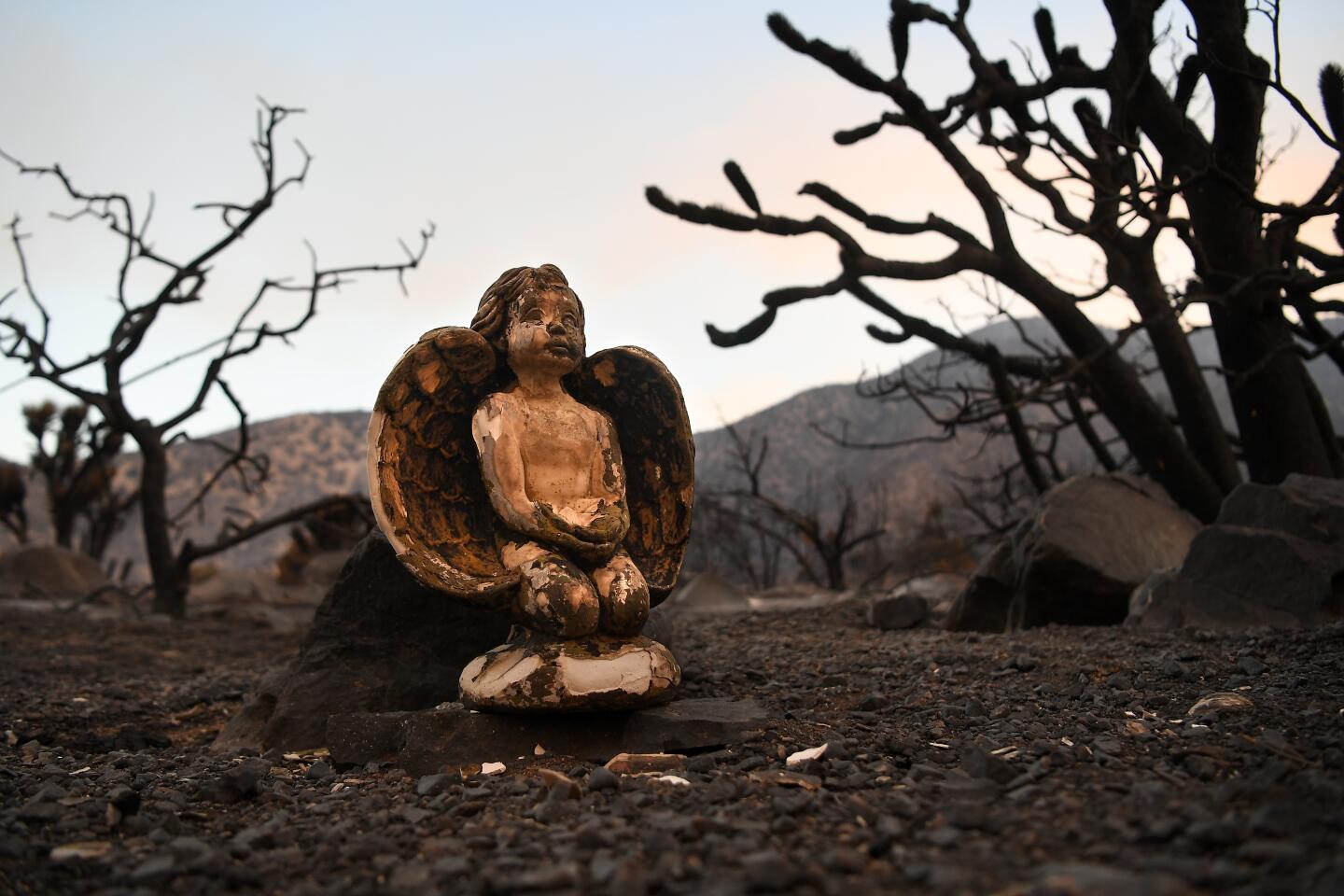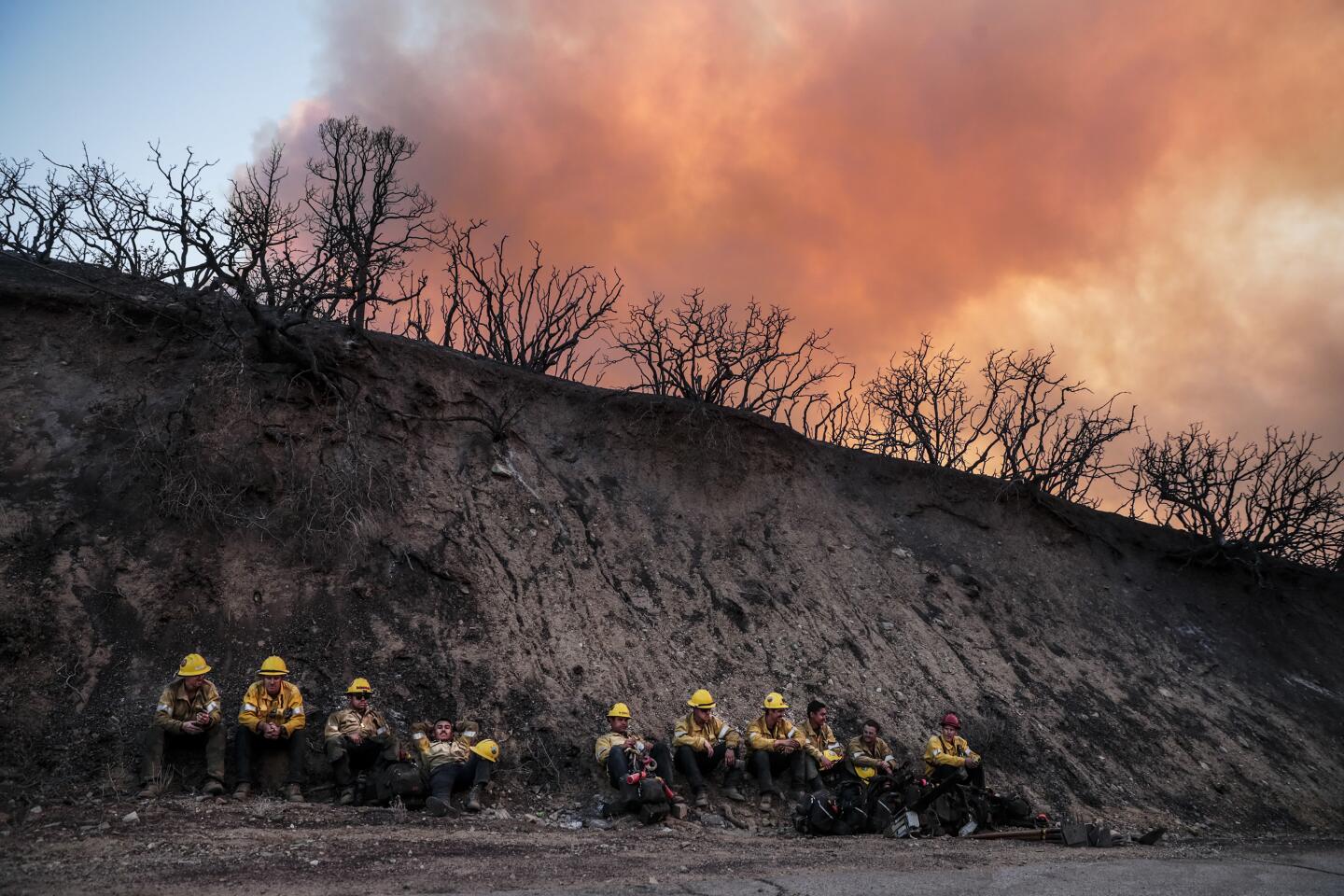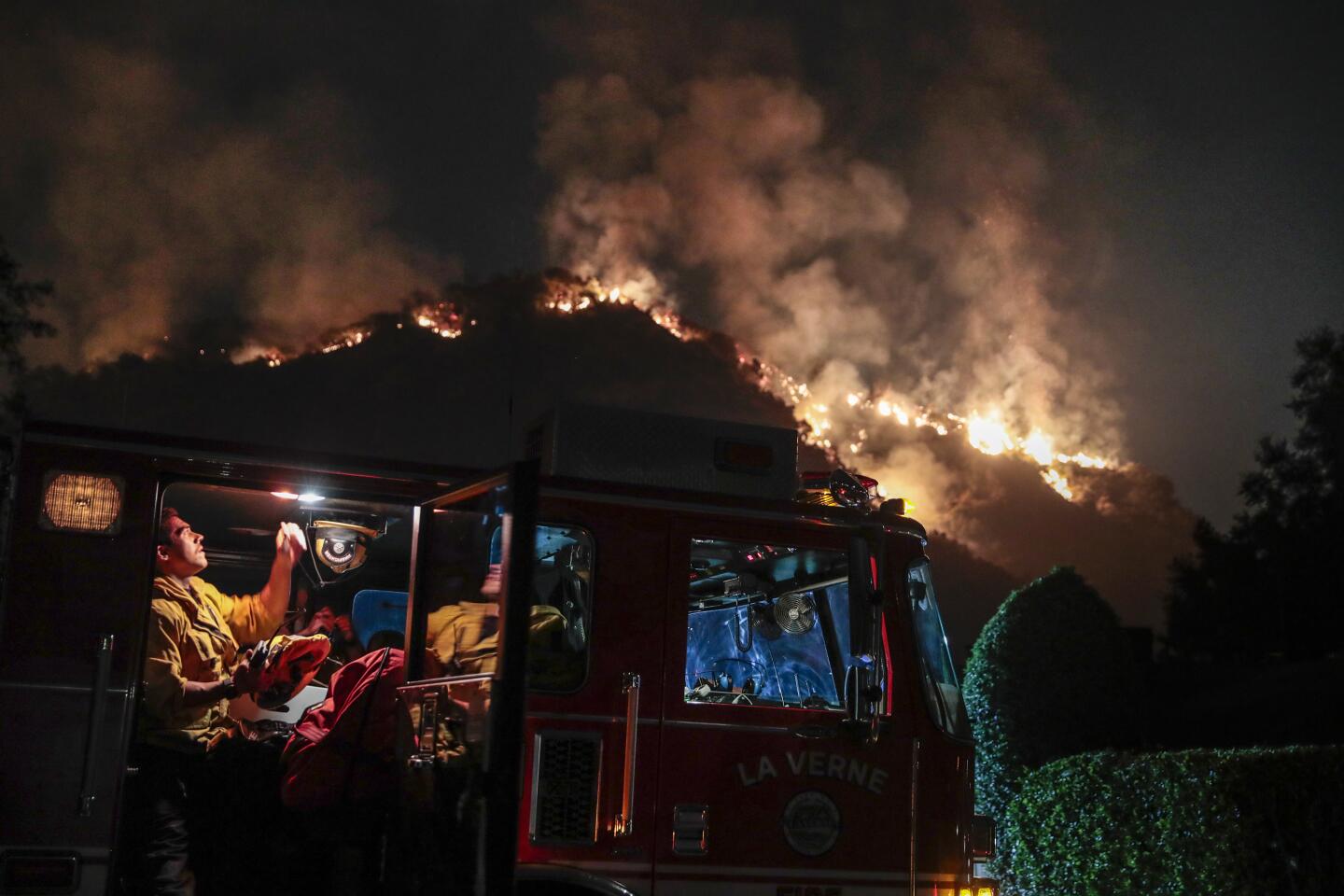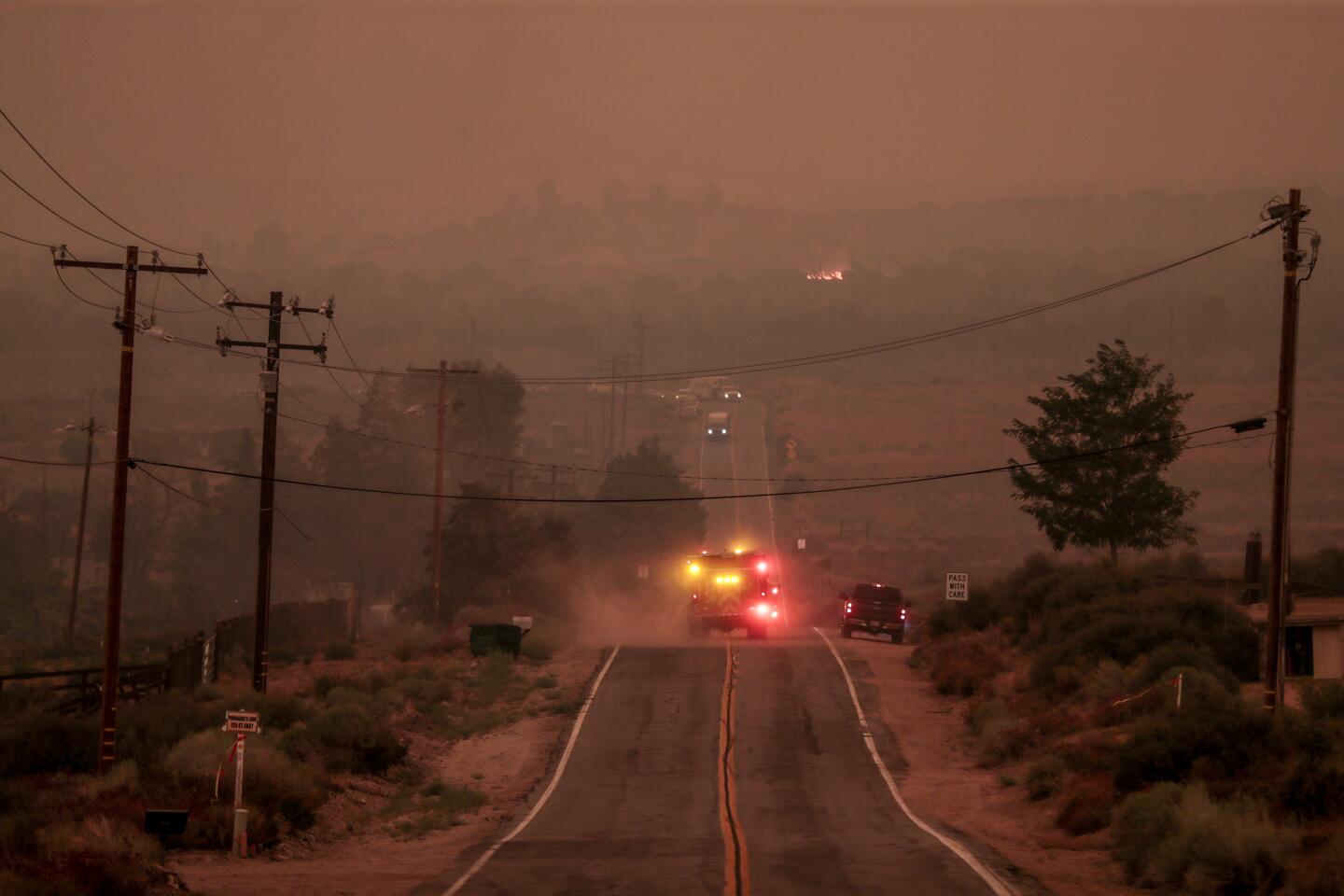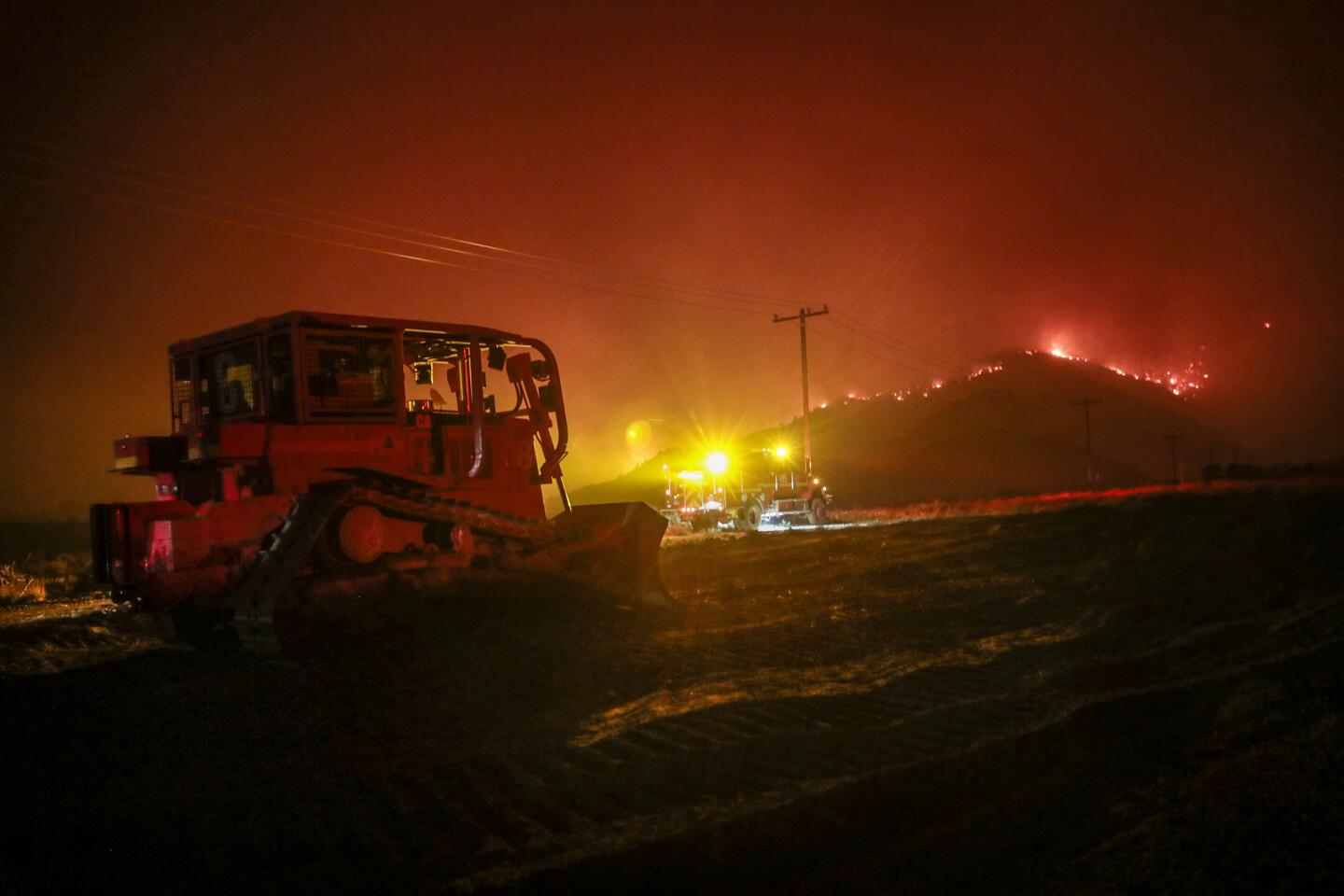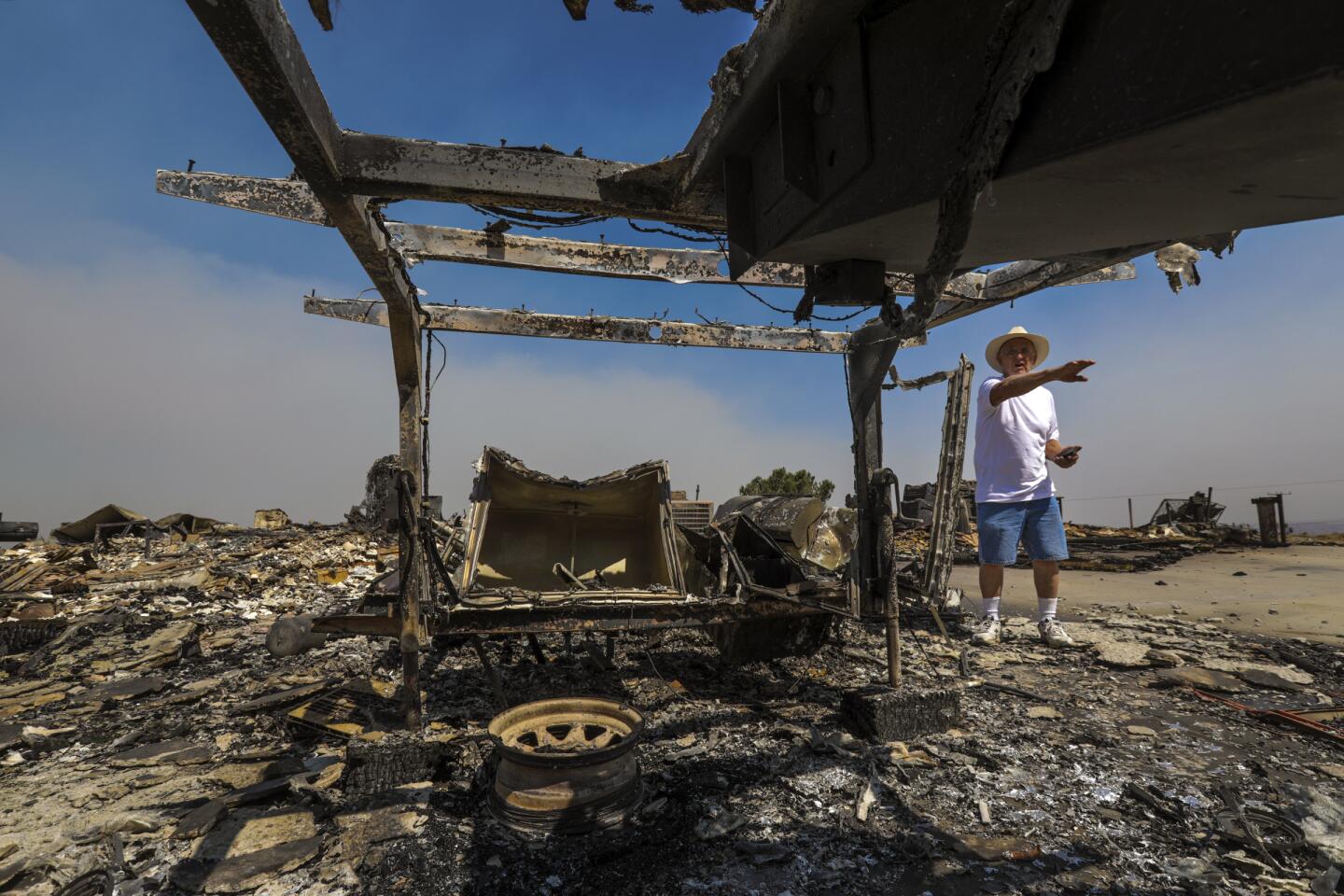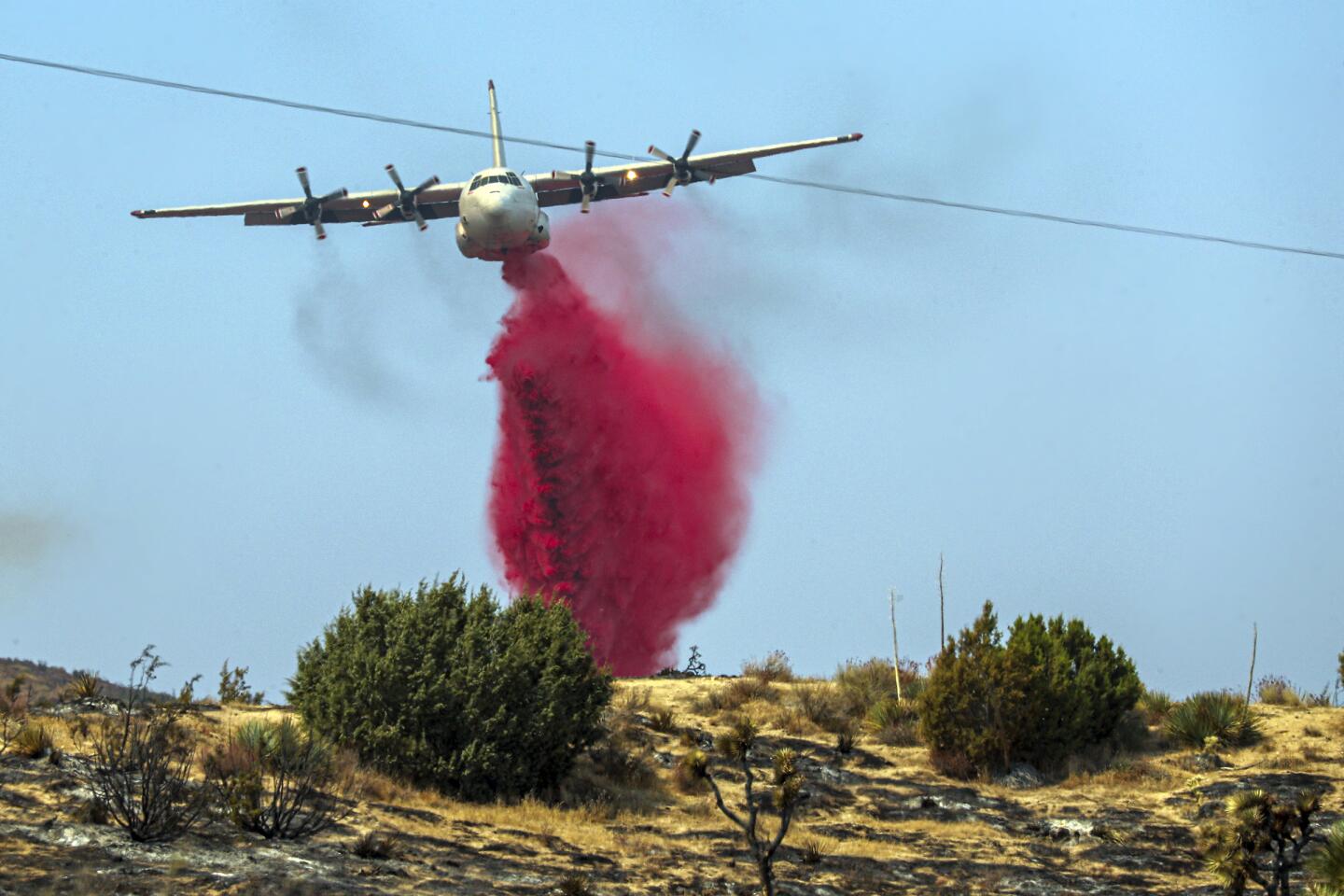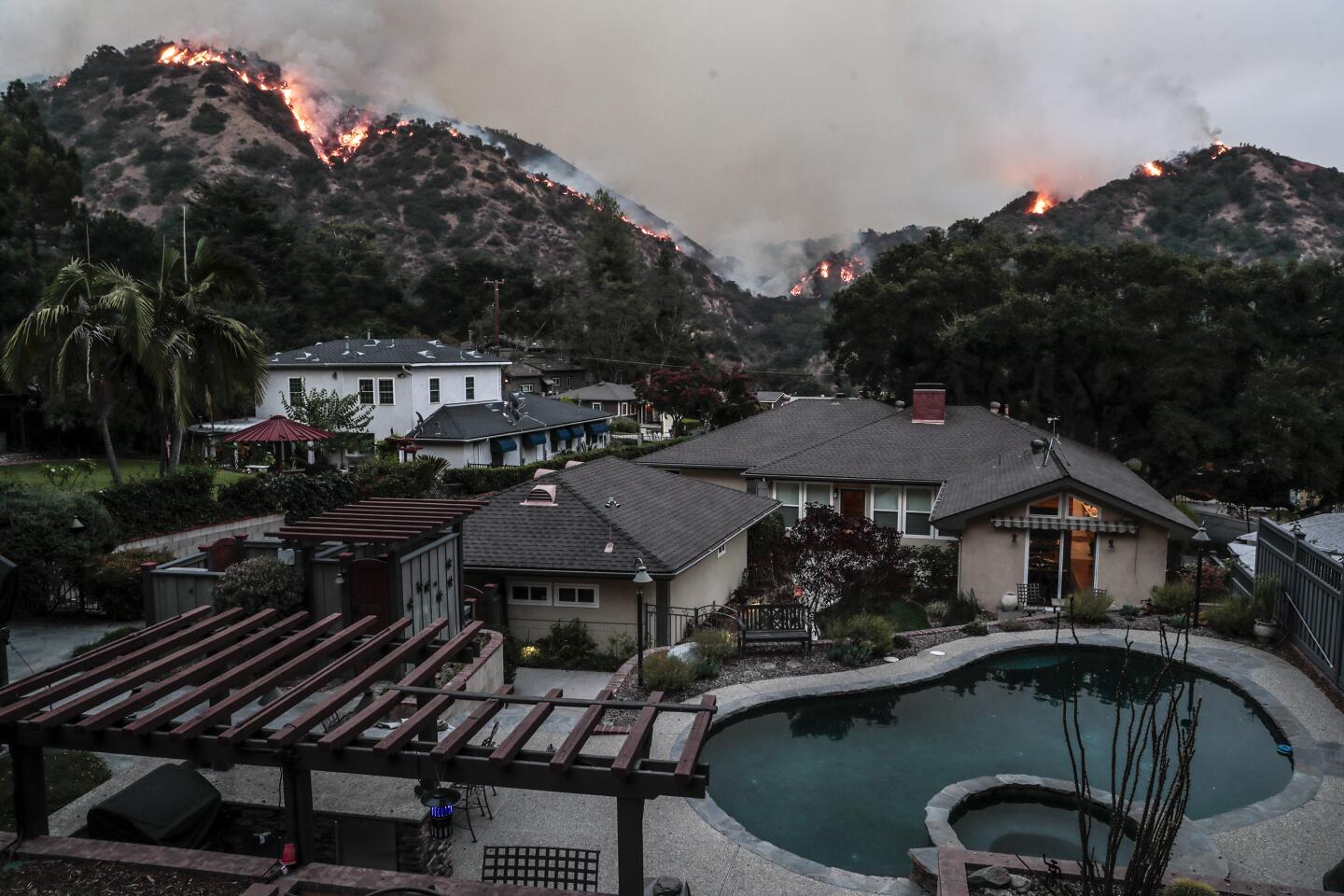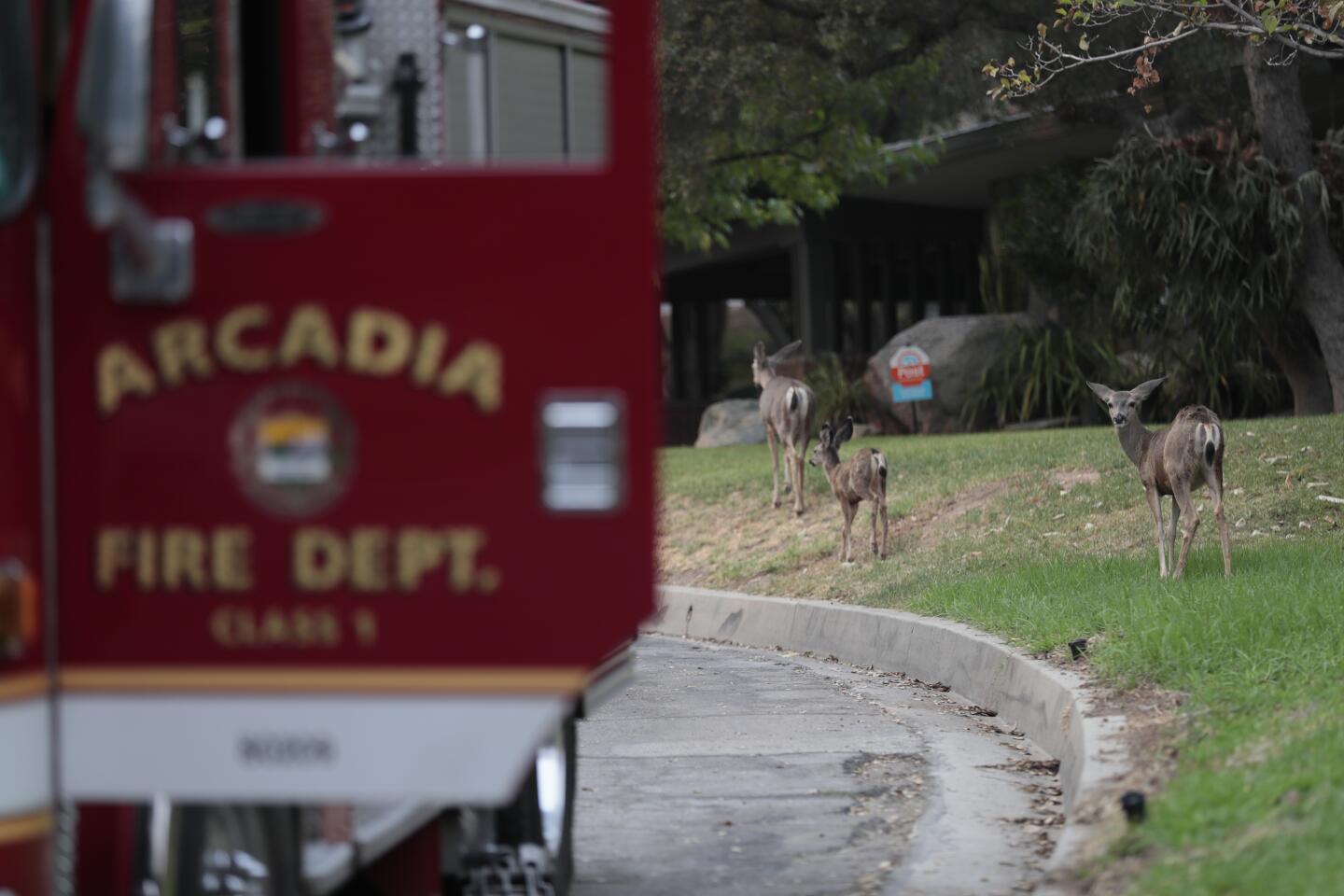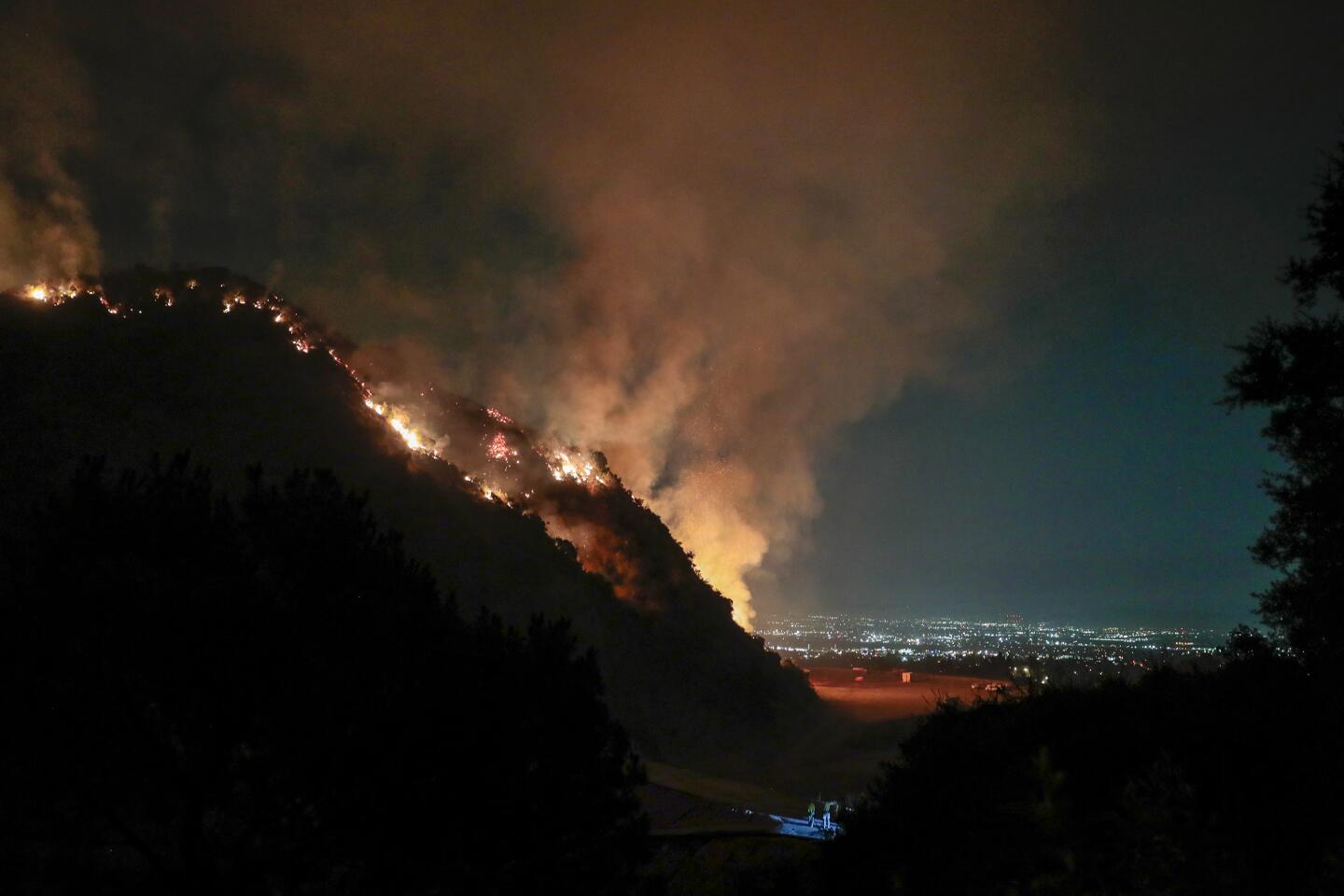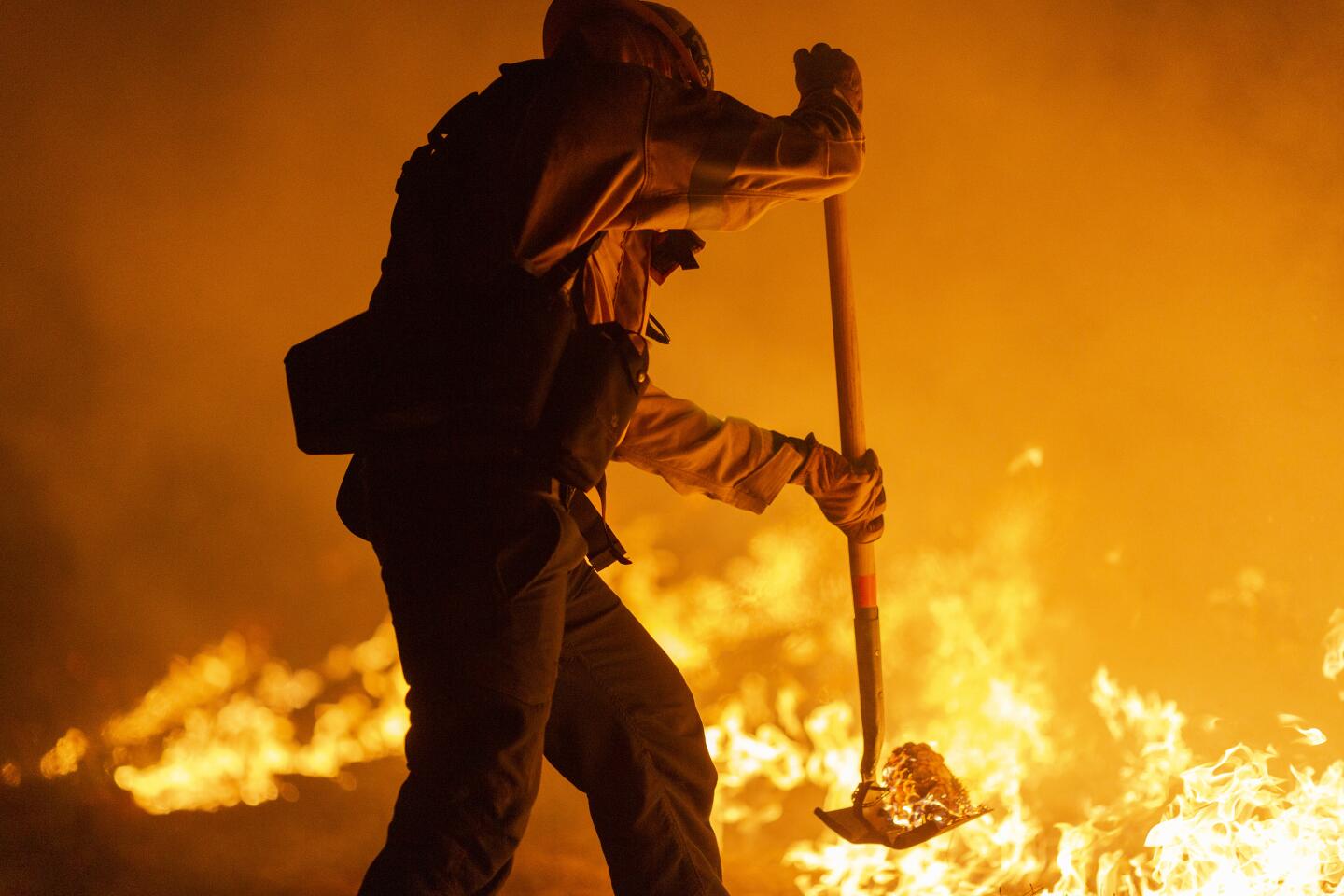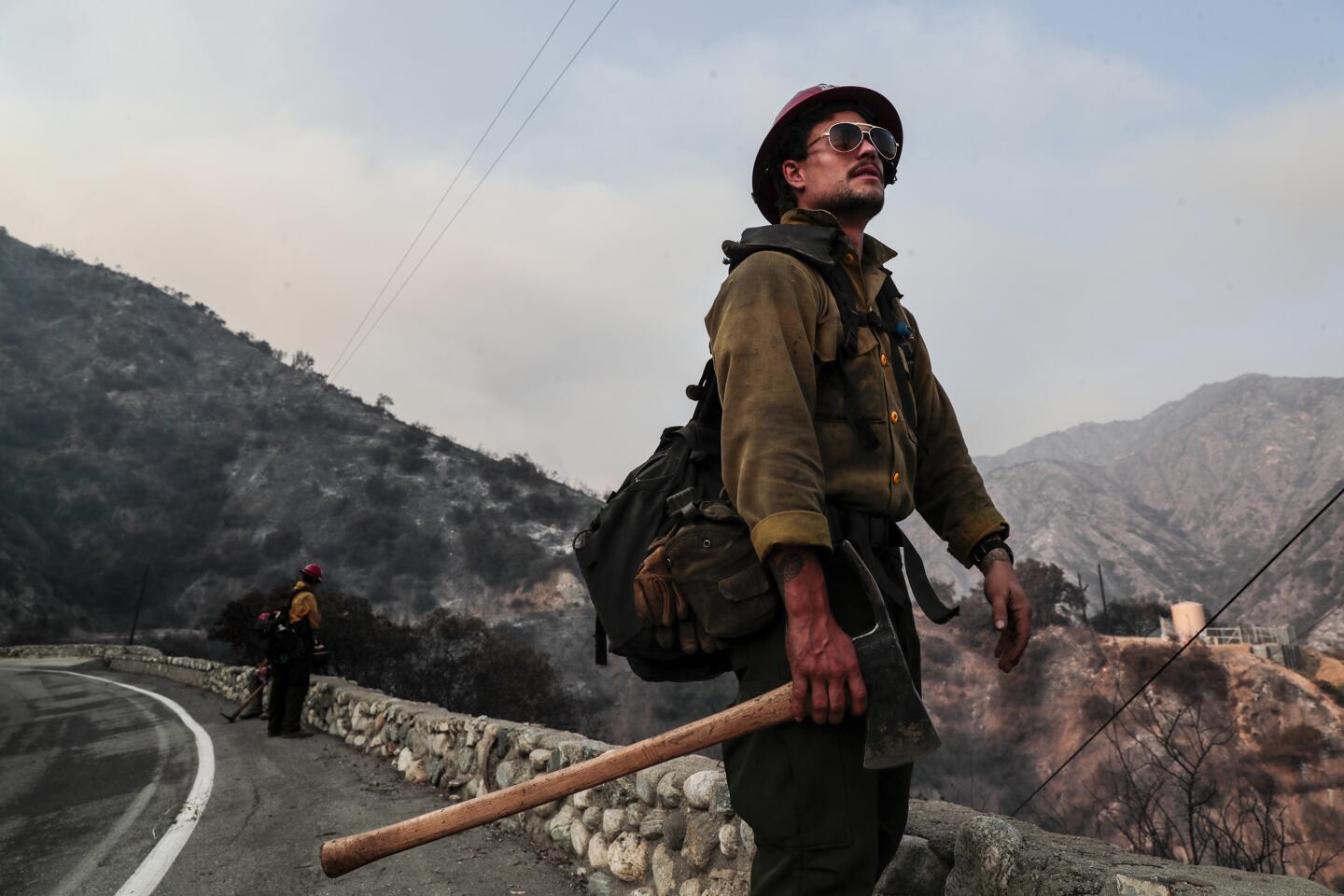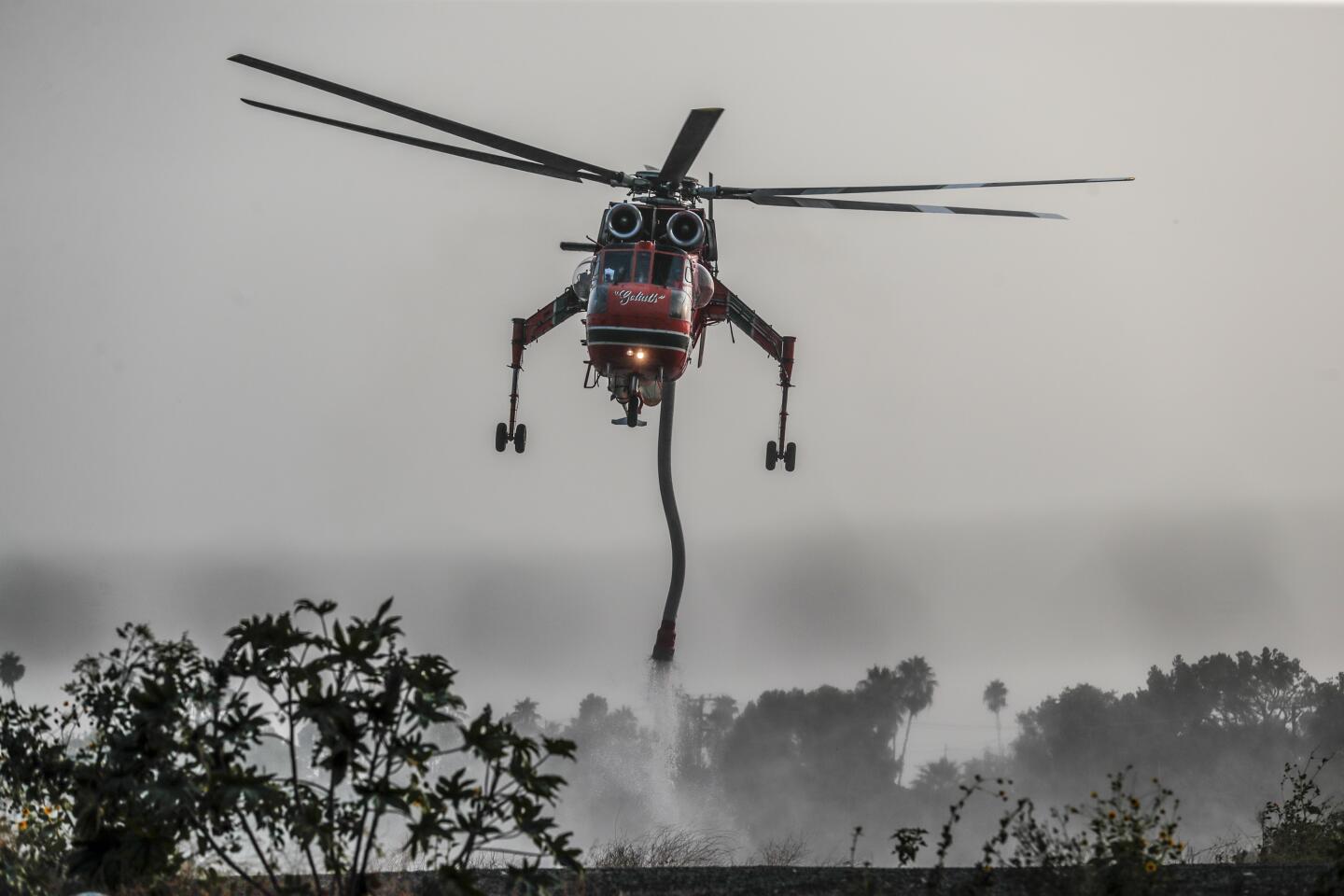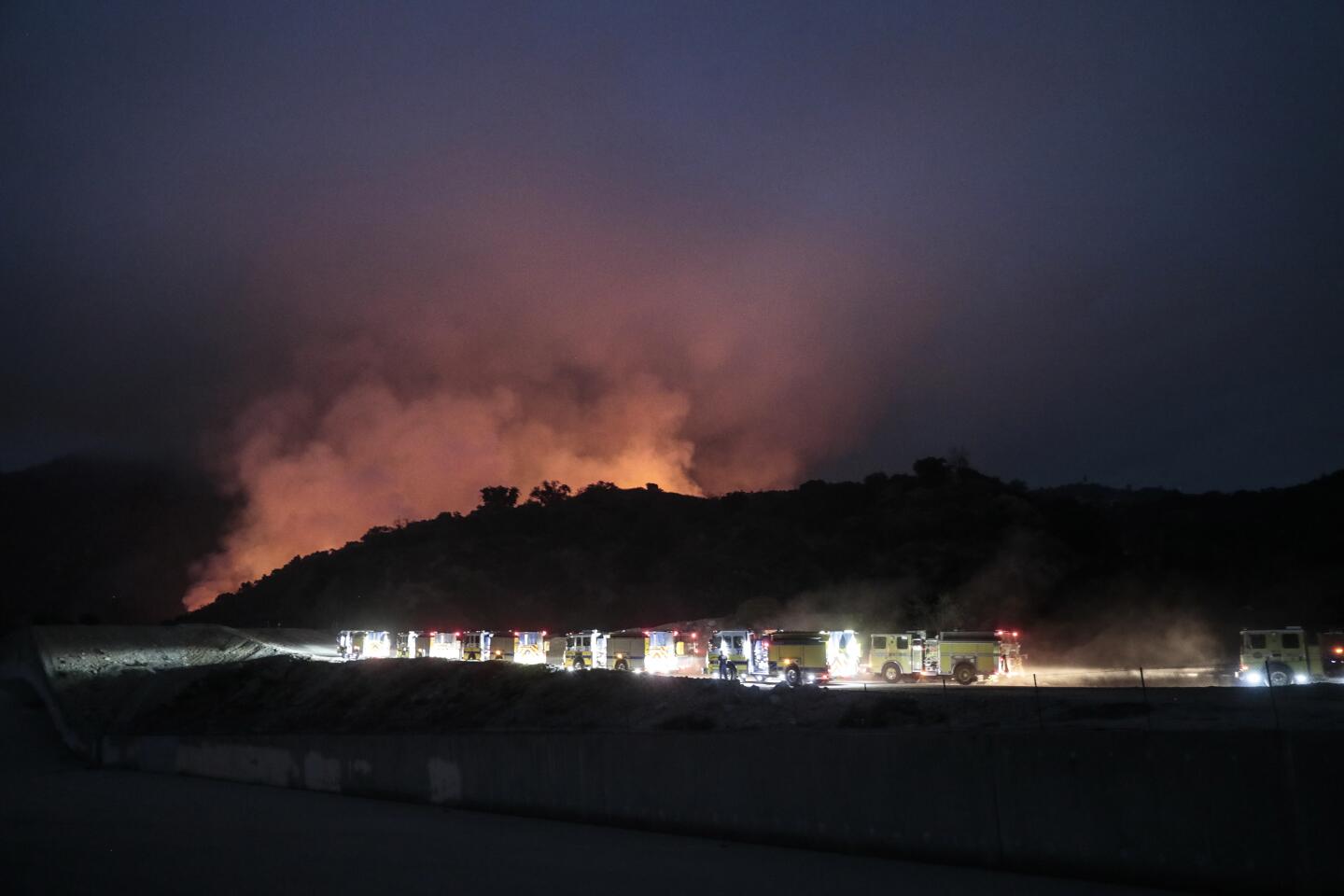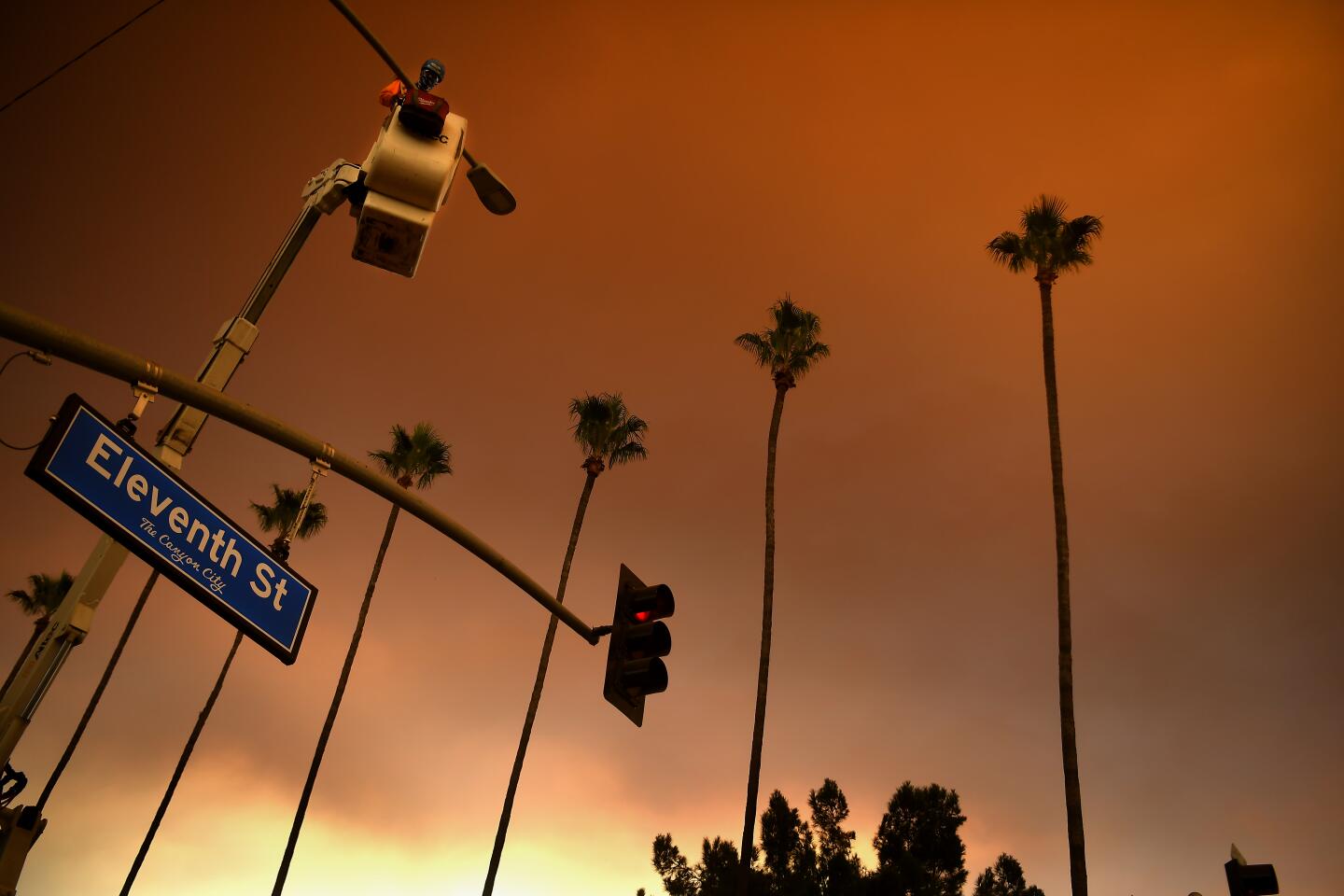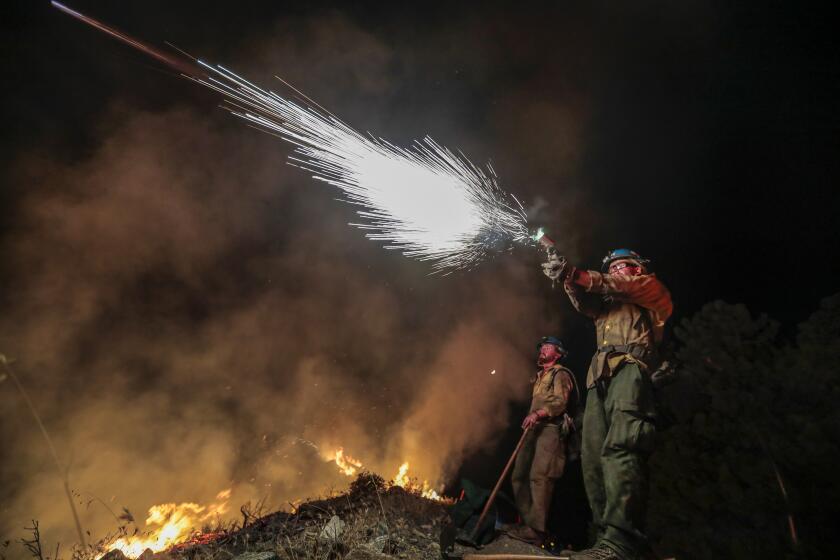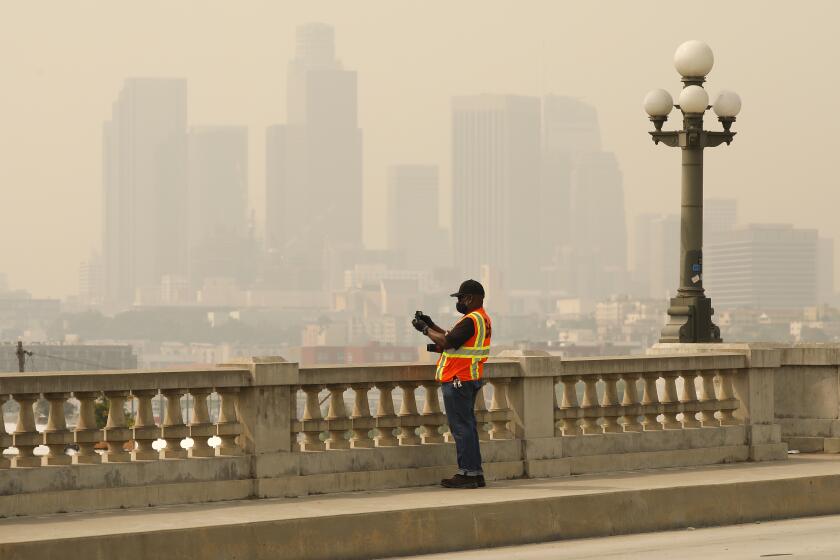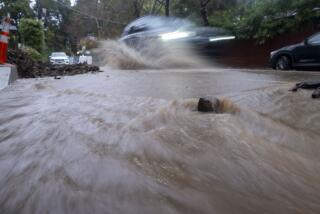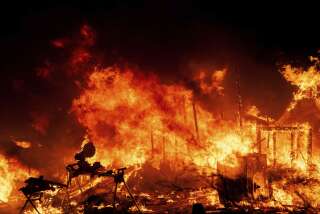Evacuations ordered in parts of Antelope Valley as Bobcat fire moves within 1 mile of Juniper Hills
The Bobcat fire opened a new, dangerous front as it barreled toward homes in the Antelope Valley, prompting more evacuations.
More than a week after it started burning through the Angeles National Forest, the Bobcat fire opened a new dangerous front as it barreled toward homes in the Antelope Valley on Thursday, prompting new evacuations and further straining exhausted firefighters.
For 12 days, the fire has menaced the San Gabriel Mountains, including foothill neighborhoods in Monrovia, Arcadia and other cities, as well as the Mt. Wilson Observatory, where a team of firefighters is standing guard to protect the historic structures.
But Thursday, officials issued evacuation orders for areas toward the fires northern boundaries after the blaze jumped Highway 2 in the Angeles National Forest, fueled by canyon winds, officials said.
Evacuation warnings were issued Thursday evening on a different side of the fire for Wrightwood and Pinon Hills in San Bernardino County.
As of Thursday night, the fire had grown to about 55,000 acres, with containment at 9% — mostly along the southern and eastern edges of the blaze.
Residents in parts of the Antelope Valley were ordered to evacuate as the fire moved toward Juniper Hills and burned downhill toward Devil’s Punchbowl county park, officials said Thursday.
The order applies to Juniper Hills, Devil’s Punchbowl and Paradise Springs, including the area east of Devil’s Punchbowl Road, south of Big Pines Highway, north of Big Rock Creek and west of Jackson Lake, the Los Angeles County Sheriff’s Department said. Residents in the surrounding areas remain under an evacuation warning.
About 60 deputies have been dispatched to the area, along with some California Highway Patrol officers, to help facilitate evacuations, said Capt. Andy Berg of the Sheriff’s Department’s San Dimas station.
“If you’re in one of those evacuation areas, please leave now,” he said.
Fire officials say residents who have been ordered to evacuate should quickly gather family members and pets and head outside the evacuation zones.
Los Angeles County Fire Capt. David Dantic said crews knew the fire was moving north, “but it had more activity than we thought” on Thursday.
The Bobcat fire, which started Sept. 6, has grown steadily in multiple directions. Officials say the spread is caused by a combination of bone-dry vegetation and rugged topography that makes it hard to fight the fire.
“Our canyons have a tendency to run north and south, so if a 15-to-20 mph wind reaches that, it’s enough — with the driest fuels we’ve had in a long time — to really drive the fire,” Angeles National Forest spokesman Andrew Mitchell said Thursday.
One key to getting through any emergency situation is preparation.
Nearly 1,300 personnel have been assigned to the blaze, up from just more than 1,100 Wednesday, and crews have gained some control over its southern end — which was a top priority for days due because of its proximity to several foothill communities.
“Right now, we feel like we’ve closed the ‘front door’ of this fire,” Mitchell said, referring to the southern perimeter.
Evacuation orders for portions of Arcadia and Sierra Madre were lifted Wednesday, although residents are being urged to stay vigilant and alert should fire conditions change.
Similar evacuation warnings remain in place for Monrovia, Bradbury, Altadena, Duarte and Pasadena. Los Angeles County Fire Department Deputy Chief Anthony Whittle warned residents in the foothills that even though the risk to those areas has lessened, the evacuation warning still means people need to be prepared to leave.
“What we want the community to understand is the evacuation warning means that you are now a partner in protecting life,” he said.
No structures have been lost, and no civilians had been injured as of Thursday night. Jerry McGowan, an incident commander for the Bobcat fire, said one firefighter had suffered a separated shoulder and a few others had suffered ankle sprains and other minor injuries.
The top priority for Thursday remained the continued protection of the Mt. Wilson Observatory as well as a huge spot fire in the northeast where the blaze jumped Highway 2 in the Angeles National Forest, Mitchell said.
Officials say the fire’s power lies in two factors: location and an inadequate supply of firefighters. But climate experts warn there’s more at play.
Mt. Wilson is not only an important piece of history, but also home to several broadcast towers. Crews kept the blaze from reaching the observatory Tuesday, when flames came within 500 feet of the structure, but officials say they are not out of the woods yet.
“It made a significant run [Wednesday] when the fire hit a string of conifer trees and started pushing up to the lookout in Skyline Park,” Mitchell said, adding that he saw flames as high as 30 feet.
Late Thursday night, the observatory’s official twitter account stoked concern, sharing an image from a web camera that appeared to show flames approaching the building. But Angeles National Forest personnel said the flames were actually from controlled burns “being used to expand containment lines.”
The fire is also showing growth on the north side in Cooper Canyon, which is expanding into the Pleasant View Wilderness, and near the Crystal Lake area and the West Fork, where officials said there is heavy fuel.
The Bobcat fire, along with the El Dorado fire in San Bernardino and a slew of fires in Central and Northern California, Oregon and Washington, is also contributing to dreadful air quality in Southern California.
Smoke advisories were extended through Thursday — the 11th straight day for such air quality alerts — and forecasts for the area range from unhealthy to very unhealthy, according to the South Coast Air Quality Management District.
“I left to stay with a friend in another neighborhood because the air was so poor and hard to breathe,” Pasadena resident Erin Greeson said.
More smoke from the West Coast’s ferocious firestorm is expected to waft into Europe as the blazes continue to belch pollutants into the atmosphere.
Fire officials don’t expect full containment of the Bobcat fire for at least six weeks, an issue that could be complicated by shifting weather in the coming weeks.
Fire officials said Thursday night that while lower temperatures over the weekend might help moderate the blaze’s behavior, strong winds could change the fire’s direction and complicate containment measures. Temperatures are expected to be high again next week.
More to Read
Start your day right
Sign up for Essential California for news, features and recommendations from the L.A. Times and beyond in your inbox six days a week.
You may occasionally receive promotional content from the Los Angeles Times.
